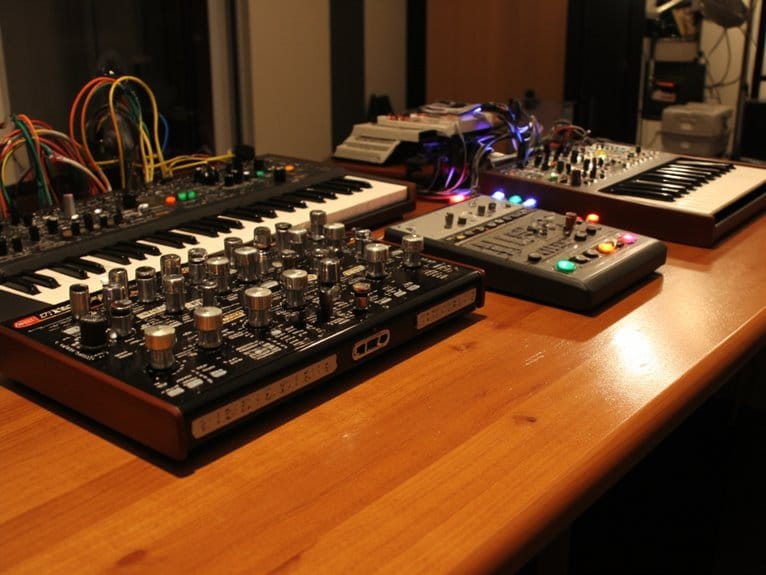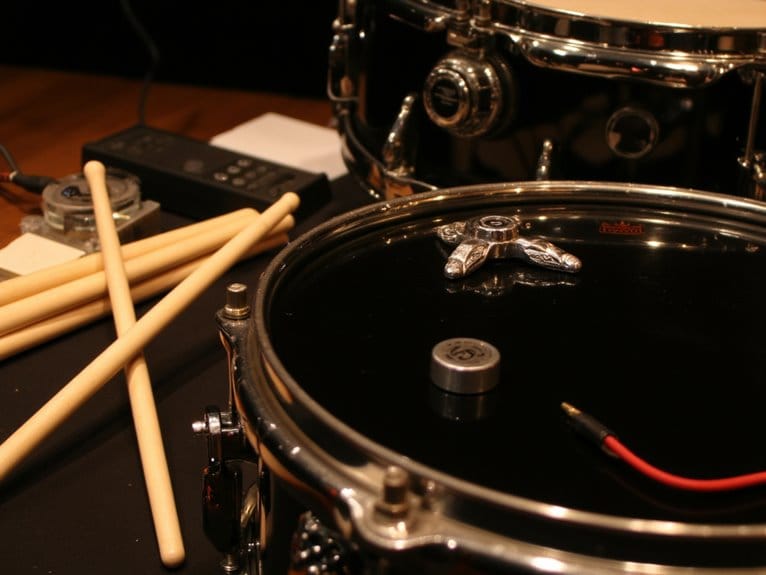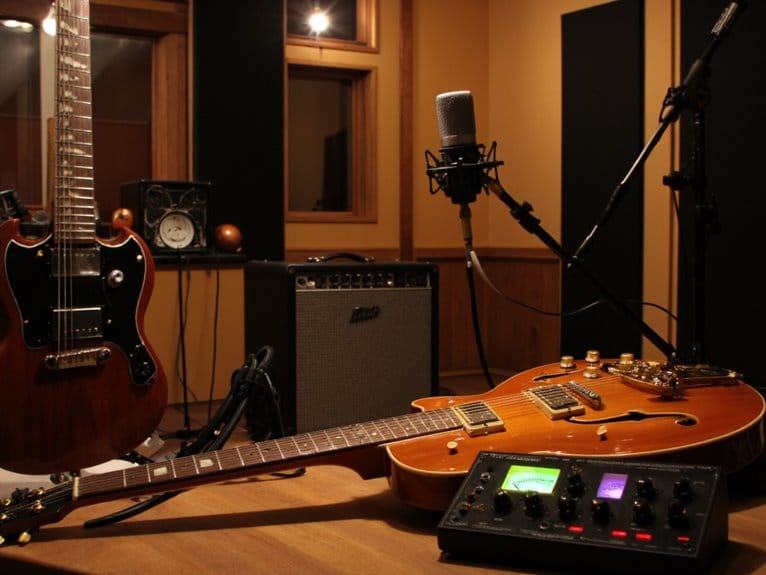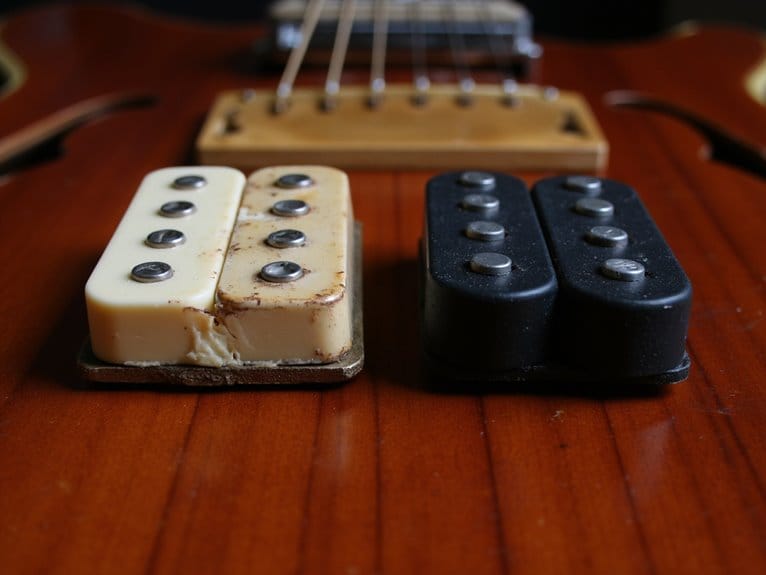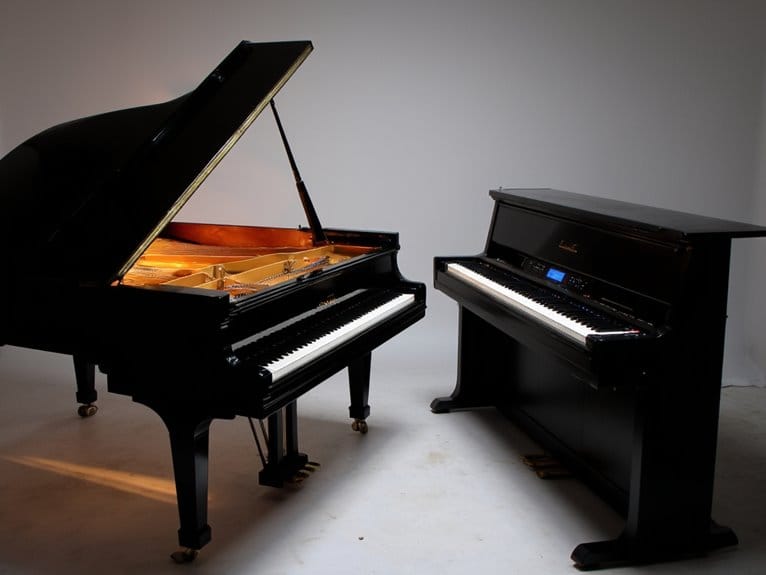Basic Categories of Synthesizers: Understanding the Fundamentals
You’ll encounter three fundamental synthesizer categories that define modern sound design: analog systems generate continuous electrical signals through voltage-controlled oscillators and filters, delivering that coveted warm, organic tone with subtle fluctuations; digital synthesizers employ DSP algorithms for precise, stable output with extensive preset storage and complex synthesis methods like FM and wavetable; hybrid models combine analog warmth with digital flexibility, pairing components strategically for versatile creation possibilities that facilitate deeper sonic exploration.
We are supported by our audience. When you purchase through links on our site, we may earn an affiliate commission, at no extra cost for you. Learn more.
Notable Insights
- Analog synthesizers generate sound through voltage-controlled components, producing continuous signals with characteristic warmth and organic tonal fluctuations.
- Digital synthesizers use DSP algorithms and numerical processing, offering precise output with preset storage and extensive modulation capabilities.
- Hybrid synthesizers combine analog warmth with digital precision, typically pairing digital oscillators with analog filters for versatile sound creation.
- Essential synthesis methods include subtractive, additive, FM, wavetable, and granular synthesis, each offering distinct approaches to sound generation.
- Specialized synthesis approaches utilize modern configurations like FPGA implementations and high sampling rates to reduce artifacts and enhance complexity.
Analog Vs Digital Synthesizers: Core Technologies and Sound Characteristics
When you’re diving into the world of synthesizers, the fundamental choice between analog and digital technology represents more than just a technical preference-it’s a decision that’ll shape your entire musical experience.
Analog synthesizers generate sound through voltage-controlled components like oscillators and filters, creating continuous electrical signals that produce the characteristic analog warmth many musicians crave. The continuous nature of analog signals means they flow with infinite resolution between any two points, much like a steering wheel that can be positioned at any precise angle rather than being limited to discrete steps. Many modern analog and semi-modular synths feature patch matrices with 50-93 patch points that enable complex signal routing and creative sound design possibilities.
Voltage-controlled oscillators and filters create continuous electrical signals that deliver the distinctive analog warmth musicians treasure in their sonic palette.
Digital synthesizers, conversely, use DSP algorithms and numerical processing to craft sounds with remarkable digital flexibility, enabling complex synthesis methods impossible in analog circuitry. Digital instruments also offer preset storage capabilities, allowing musicians to save and instantly recall their favorite sounds. Modern digital synthesizers often feature extensive modulation capabilities that allow for real-time sound manipulation and creative experimentation. Additionally, many affordable music producers turn to a cheap synthesizer as a starting point for their sonic explorations. These instruments often provide a surprising range of features for their price, making them accessible for both beginners and seasoned musicians alike. With the right techniques, even a budget-friendly synth can produce rich, immersive sounds that inspire creativity.
While analog synths offer organic, slightly fluctuating tones due to component variability, digital instruments provide precise, stable output with extensive sonic possibilities ranging from analog emulations to uniquely evolving textures that push creative boundaries.
Essential Synthesis Methods: From Subtractive to Granular Techniques
The architecture of sound creation in synthesizers revolves around five fundamental synthesis methods, each offering distinct sonic characteristics and creative possibilities that’ll dramatically influence your musical output. One of the most versatile and experimental approaches is Modular Synthesis, which allows musicians to create unique signal paths by connecting different modules in various configurations. This method empowers artists to explore an almost infinite variety of textures, rhythms, and sounds, breaking the conventional boundaries of traditional synthesis. As you delve into these synthesis methods, you’ll discover how each can be tailored to fulfill your artistic vision, leading to innovative and personalized sonic landscapes.
Subtractive techniques, the most traditional approach, start with harmonically rich waveforms and carve away frequencies using filters, creating everything from buzzy leads to warm pads.
Additive synthesis builds sounds from individual sine waves, offering precise tonal control for recreating acoustic instruments.
FM synthesis modulates frequencies to generate complex, metallic timbres popularized by the Yamaha DX7. This method uses carrier and modulator waves to achieve its distinctive sound character, similar to how FM radio transmission operates.
Wavetable synthesis scans through multiple waveforms for evolving textures, while granular textures emerge from manipulating tiny sound segments, enabling experimental soundscapes and seamless time-stretching without pitch alteration.
Sample-based synthesis captures real-life sounds in digital format, providing flexibility to alter pitch and tone while retaining the authentic sonic details of acoustic sources. This technology empowers musicians to create diverse soundscapes that blend natural sounds with electronic manipulation. By comprehensively exploring sample-based synthesis, artists can innovate while also gaining insights into understanding synthesizer categories, which play a crucial role in the overall sound design process. As a result, they can craft unique auditory experiences that resonate with listeners on multiple levels.
Hybrid Systems and Specialized Synthesis Approaches
As synthesis technology evolved beyond purely analog or digital boundaries, hybrid synthesizers emerged to bridge the sonic gap between warm analog character and precise digital control, combining the best attributes of both worlds into versatile instruments that’ve become studio staples.
These hybrid synths typically pair digital oscillators with analog filters, creating a signal path where wavetable synthesis provides complex harmonic content while analog circuitry adds the coveted warmth that purely digital instruments often lack.
| Component | Digital Section | Analog Section |
|---|---|---|
| Oscillators | Wavetable/DDS precision | N/A |
| Filters | Optional digital processing | Warm, musical response |
| Envelopes | Precise automation | Organic feel |
| Modulation | Complex algorithms | Natural drift |
The performance advantages become apparent during sound design sessions, where you’ll appreciate having stable digital frequency generation feeding through analog processing that imparts subtle harmonic distortion and musical character. Modern hybrid configurations often incorporate frequency dividers to create sub-harmonics and octave relationships that enhance the overall harmonic complexity of the synthesized signal. Advanced FPGA implementations enable higher sampling rates that significantly reduce digital artifacts while allowing LFOs to operate at audio frequencies for enhanced modulation capabilities.
On a final note
You’ve now got the foundation to navigate synthesizer territory with confidence, whether you’re drawn to analog warmth, digital precision, or hybrid flexibility. I’d recommend starting with whatever synthesis method speaks to your musical goals-subtractive for classic sounds, FM for complex textures, or granular for experimental territory. Don’t overthink it; your ears will guide you toward the right sonic palette for your creative vision.

